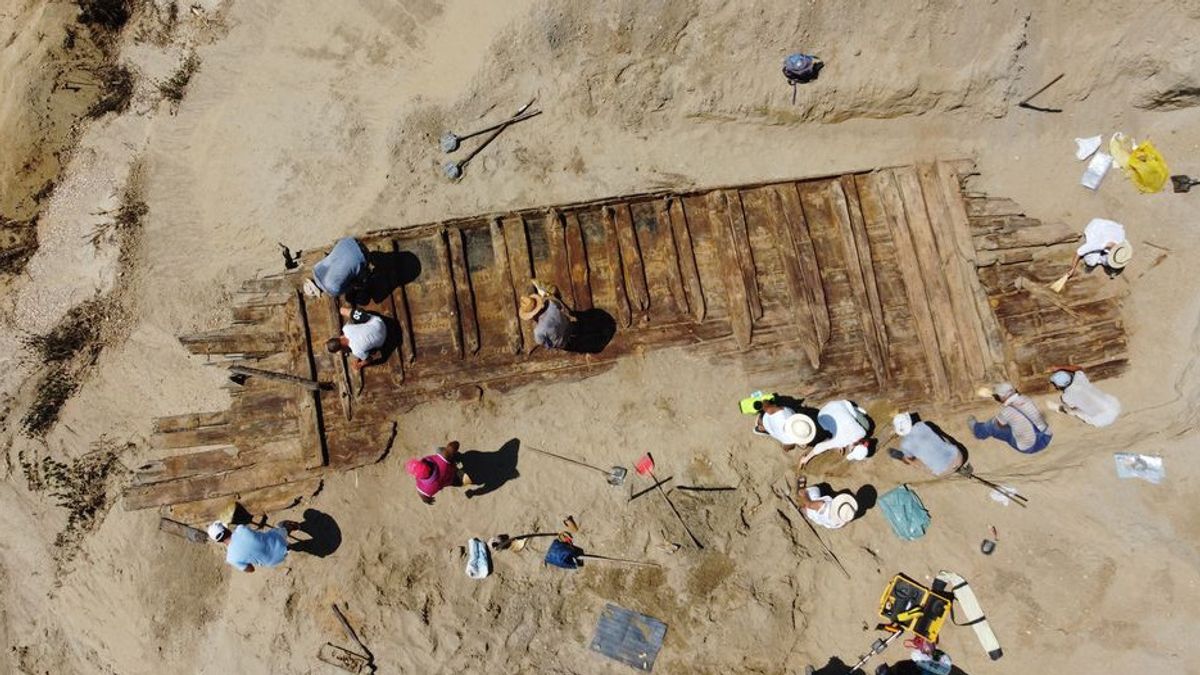JAKARTA - A team of archaeologists working at the site of a former Viminadek Roman settlement in Serbia rushed to a mine not far away, as workers there found piles of wood covered in soil and sand.
After excavators at the Drmno mine found several wood, experts rushed to take steps to deal with the second discovery in the area since 2020.
The ship is likely part of a fleet of rivers serving a vast and rapidly growing Roman city, with a population of 45,000 people with hypodroms, forts, forums, palaces, temples, amphitheaters, waterways, baths and workshops.
Archaeologists Miomir Korac said previous findings suggest the ship may have originated in the 3rd or 4th century AD when Viminademic was the capital of Roman Province Moesia Superior, owning a port near the Danube tributary.
"We may assume, this ship is a Roman ship, but we are not sure how old it is," he told Reuters.
The wood was first sprayed with water and stored under a tarp to prevent decay in the summer, Korac added.
Archaeologists believe two ships and three canoes have been found so far in the area, possibly sinking or being left on the riverbank.
Meanwhile, Mladen Jovicic, who was part of the team working on the newly found ship, said moving the hull 13 meters long without damage would be difficult.
"Our fellow engineers will prepare a special structure to be lifted by crane, and the entire conservation process will gradually follow," he explained.
Citing Live Science, the ship is estimated to have an initial length of about 65 feet (20 m) and a width of about 12 feet (3.5 m). The basis is flat, such as barges and archaeologists think it is used to transport cargo between Danube and Viminademics.
"Most likely the barge was pulled from the beach or driven by rowing, and in appropriate situations, the ship could also use the wind to move, using additional screens," according to archaeologists.
Viminampics are a combination of Roman settlements and military strongholds, and after 87 AD, the city became the capital of the border province of the Roman Empire's Moesia Superior.
The city is an important trade center and a regional center for Roman culture. Archaeologists estimate Viminaxide has a population of up to 45,000 people, making it one of the largest settlements in the Balkans at the time.
Some Roman archery headquartered in the fort there, and the people in the north are known to like to fight against the Romans.
But the city and its strongholds were destroyed by the Huns in 411, which ended Roman rule in much of Europe.
VOIR éGALEMENT:
Viminadek was rebuilt in the early sixth century by Byzantine Emperor Justianus Agung, but was destroyed again in 582 by the invasion of the Avar Tribe of the Eurasian Rudest.
The excavation of Viminaxide itself has been going on since 1882. However, archaeologists estimate they have only explored 5 percent of the site, which they say covers 450 hectares and is unusual because it is not buried under modern cities.
So far, the discoveries at the site include gold tiles, jade statues, mosaics and wall paintings, weapons and the remains of three mammoths.
The English, Chinese, Japanese, Arabic, and French versions are automatically generated by the AI. So there may still be inaccuracies in translating, please always see Indonesian as our main language. (system supported by DigitalSiber.id)


















